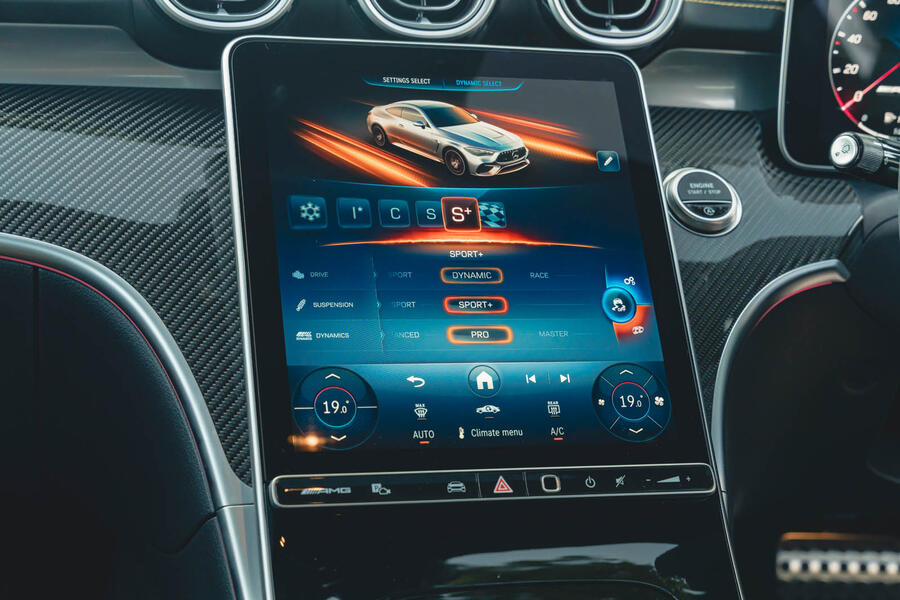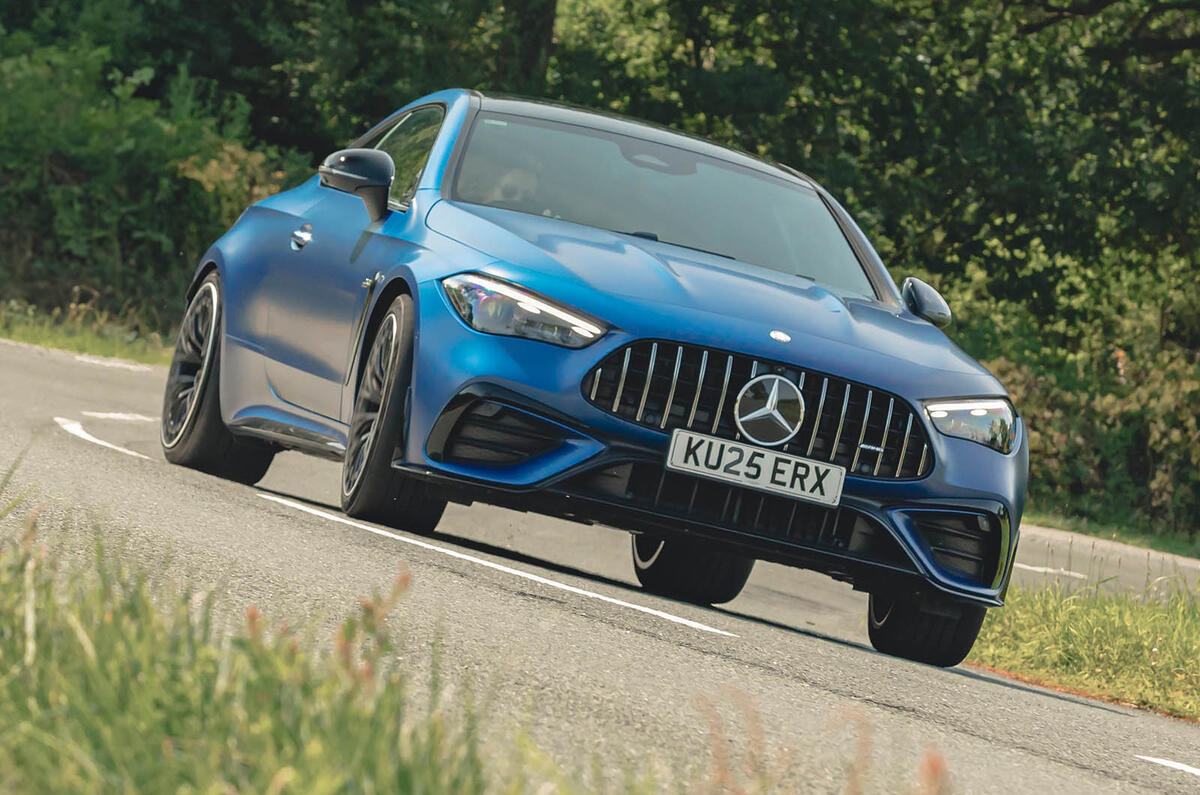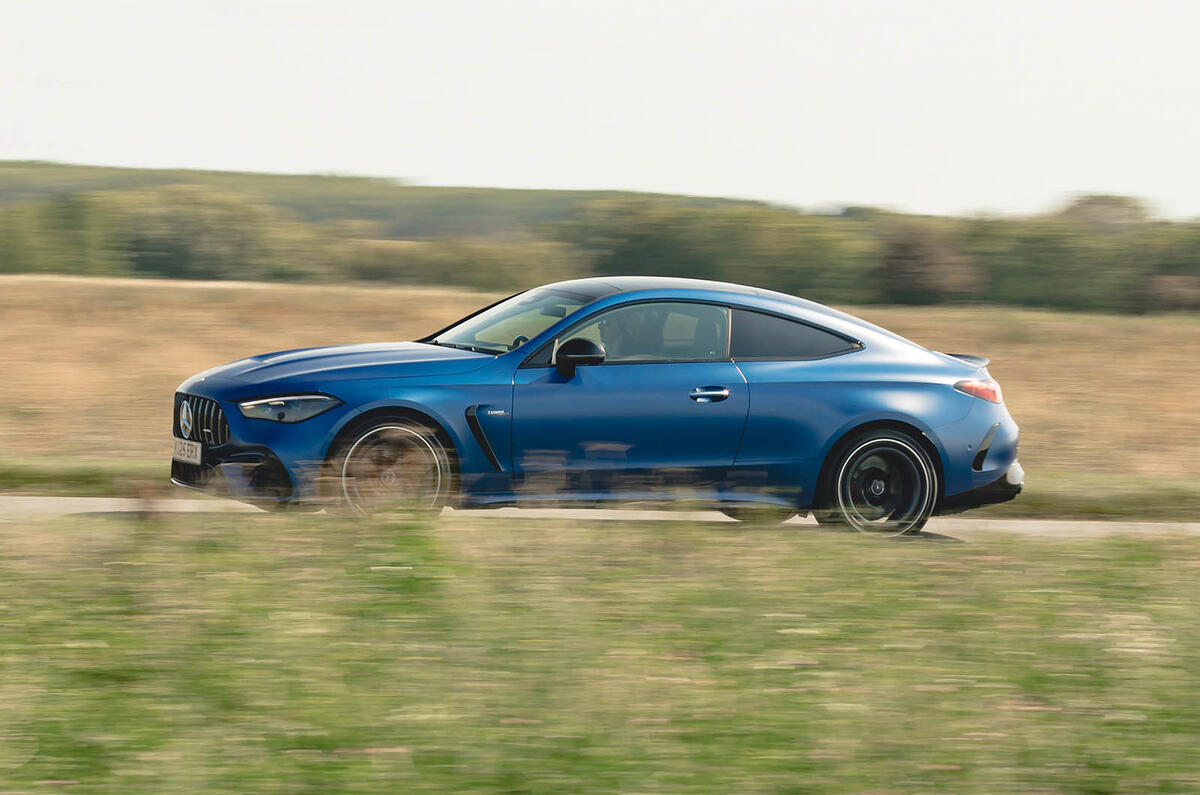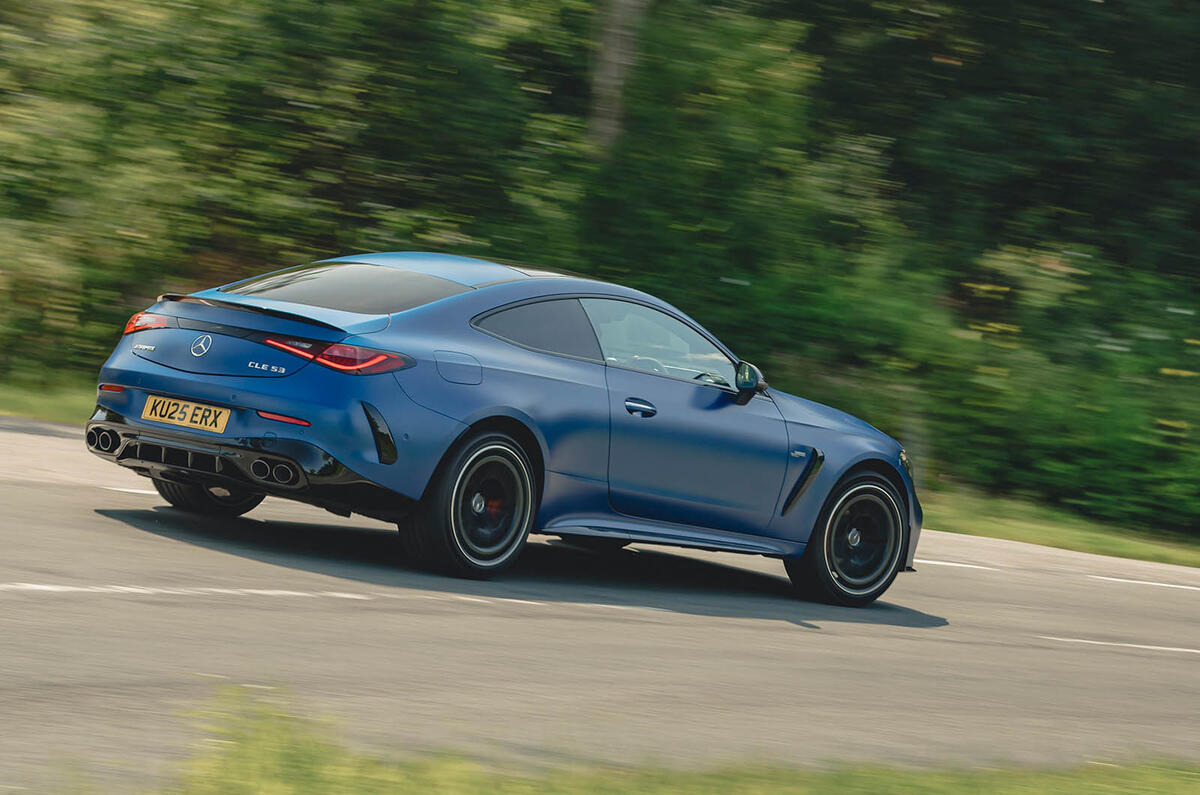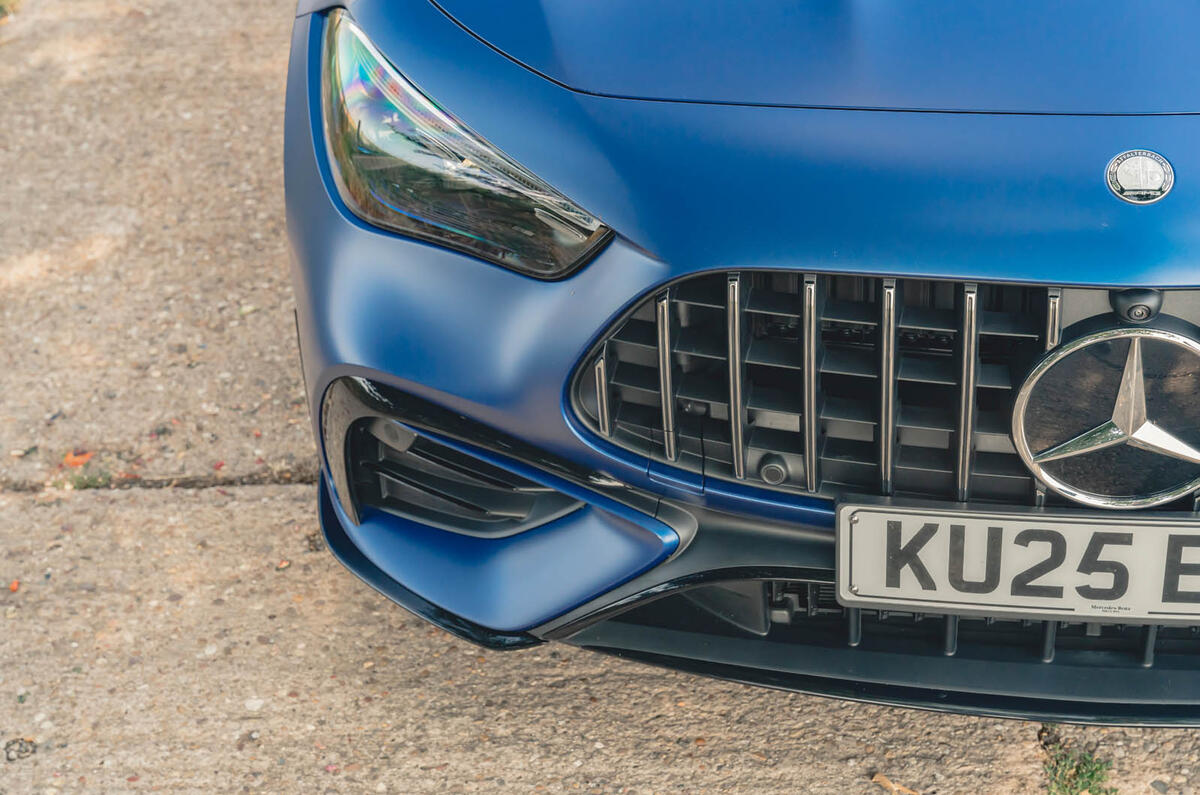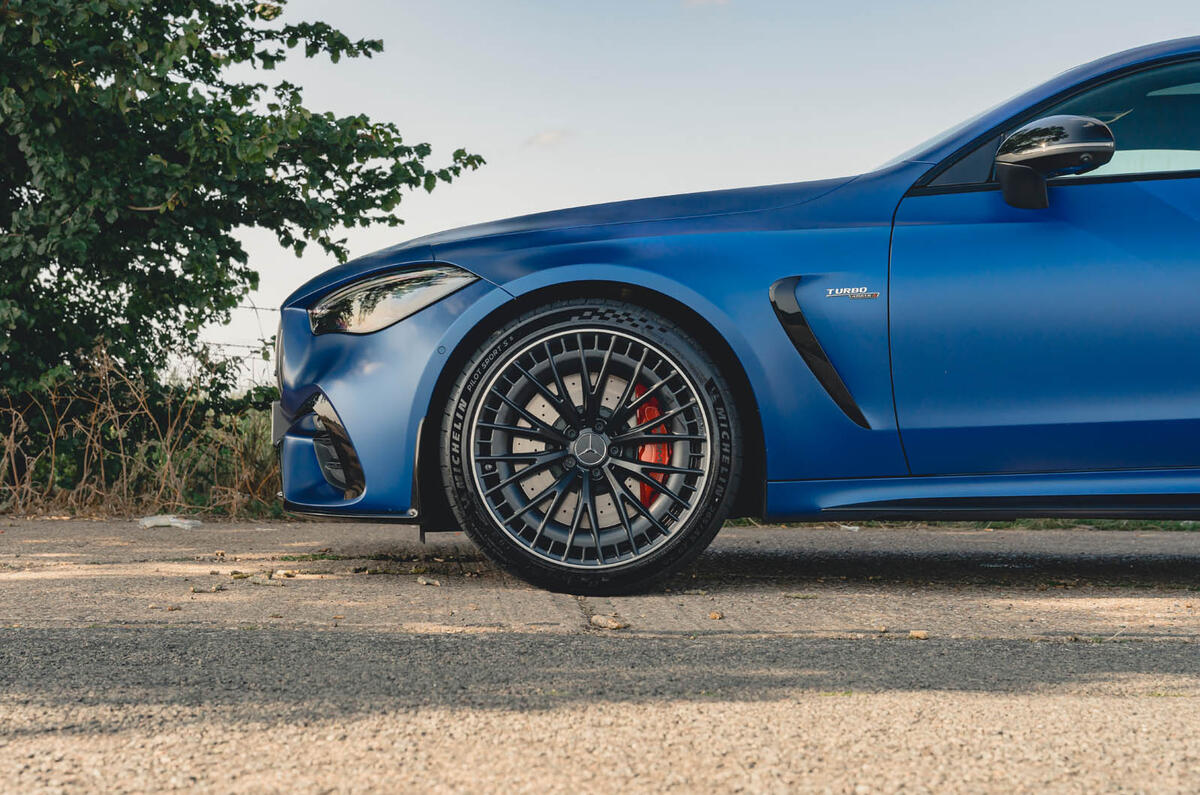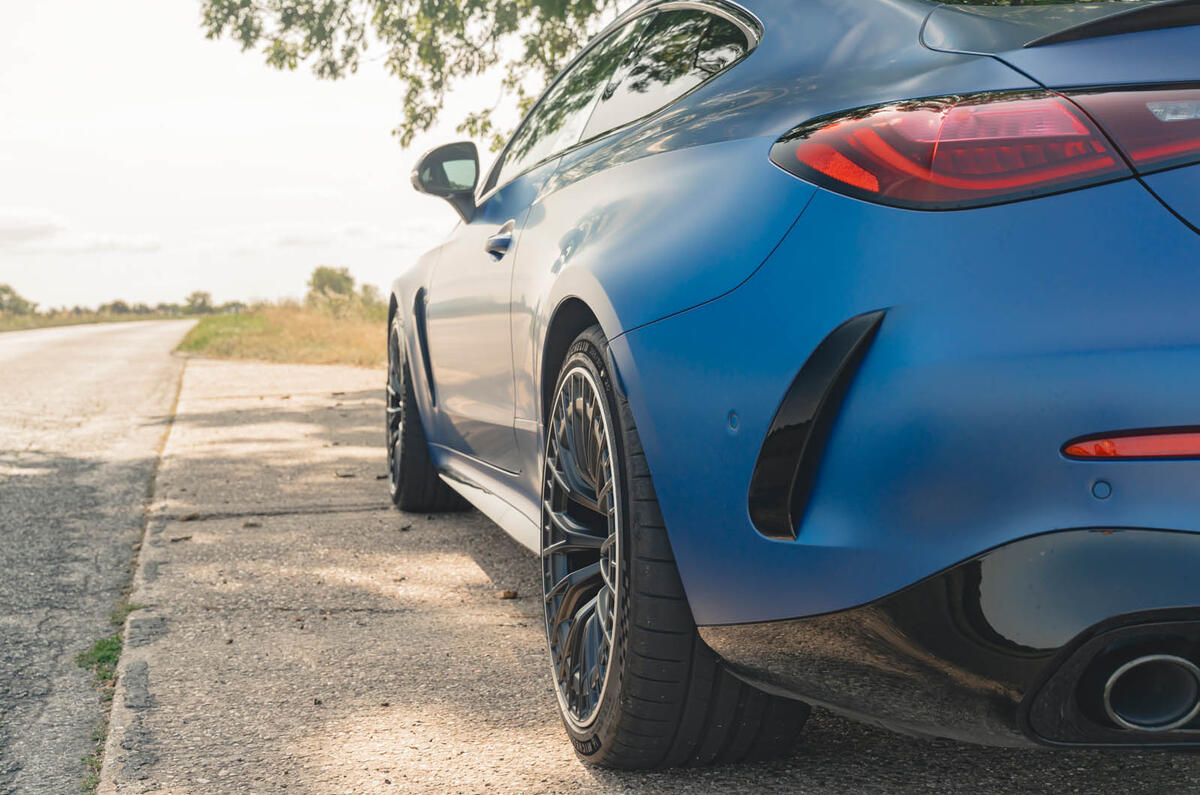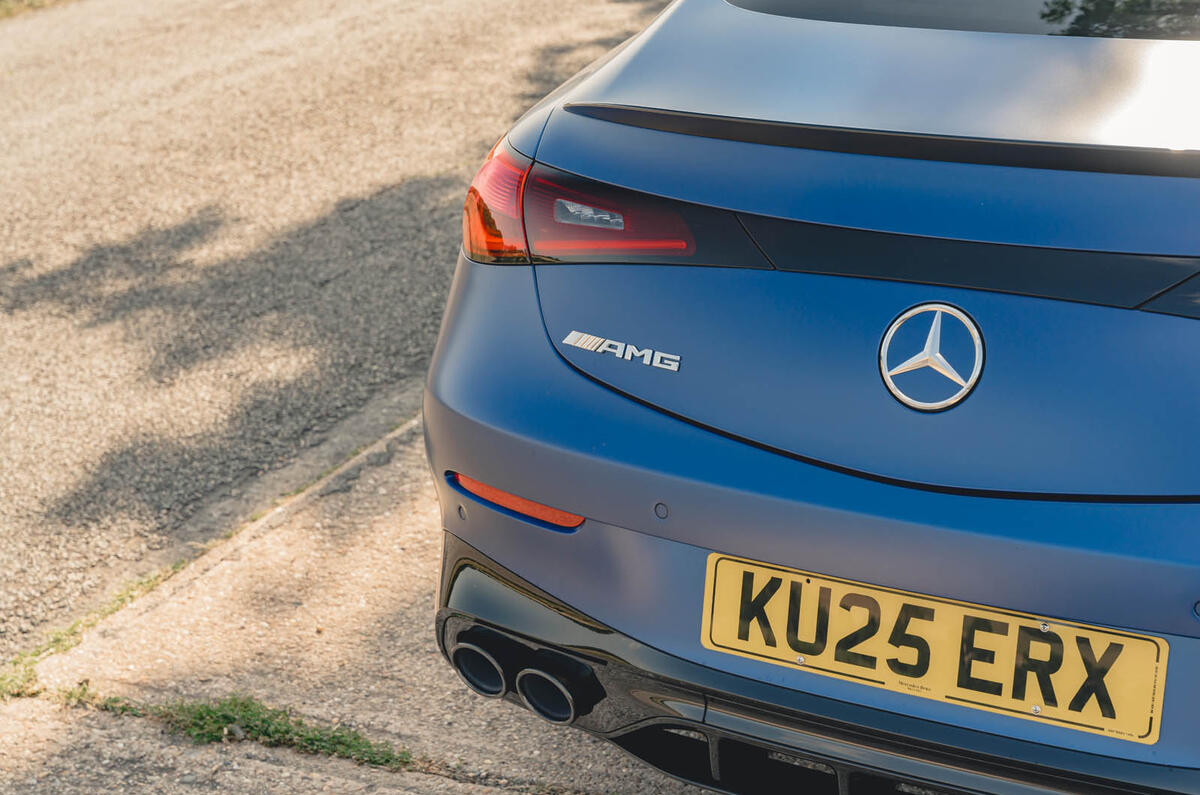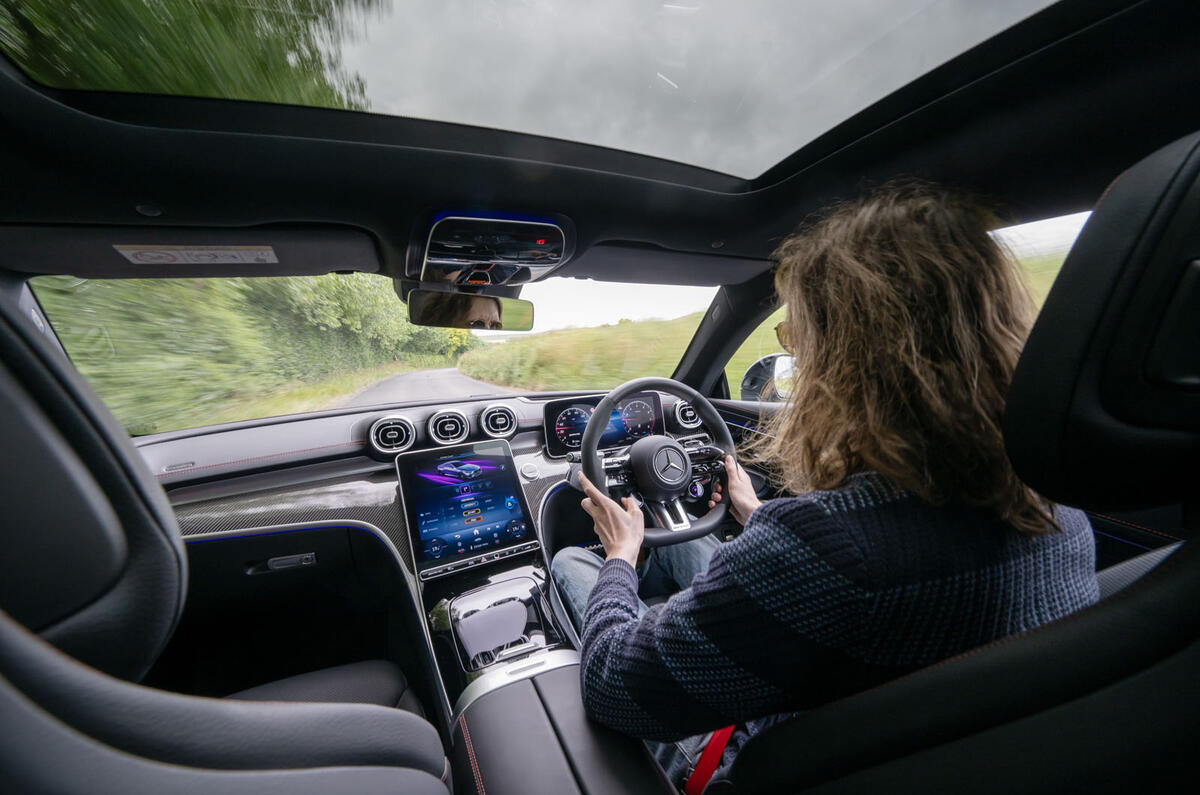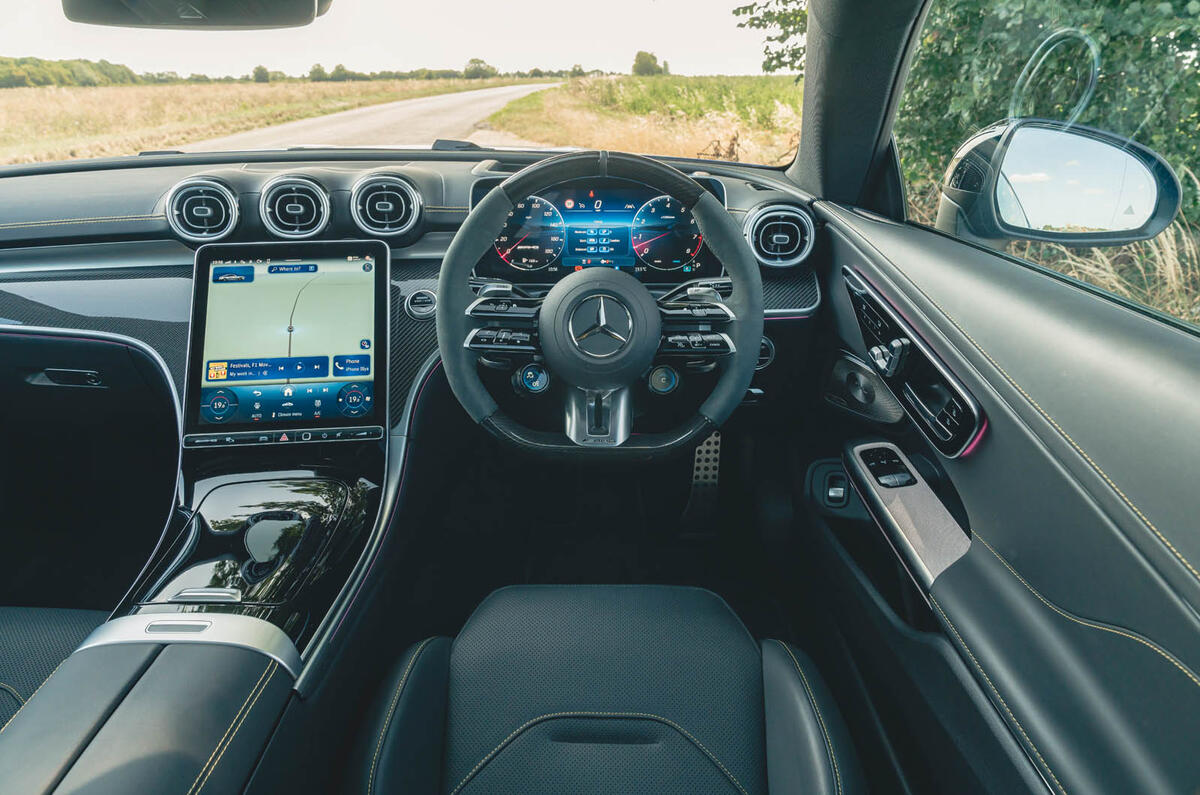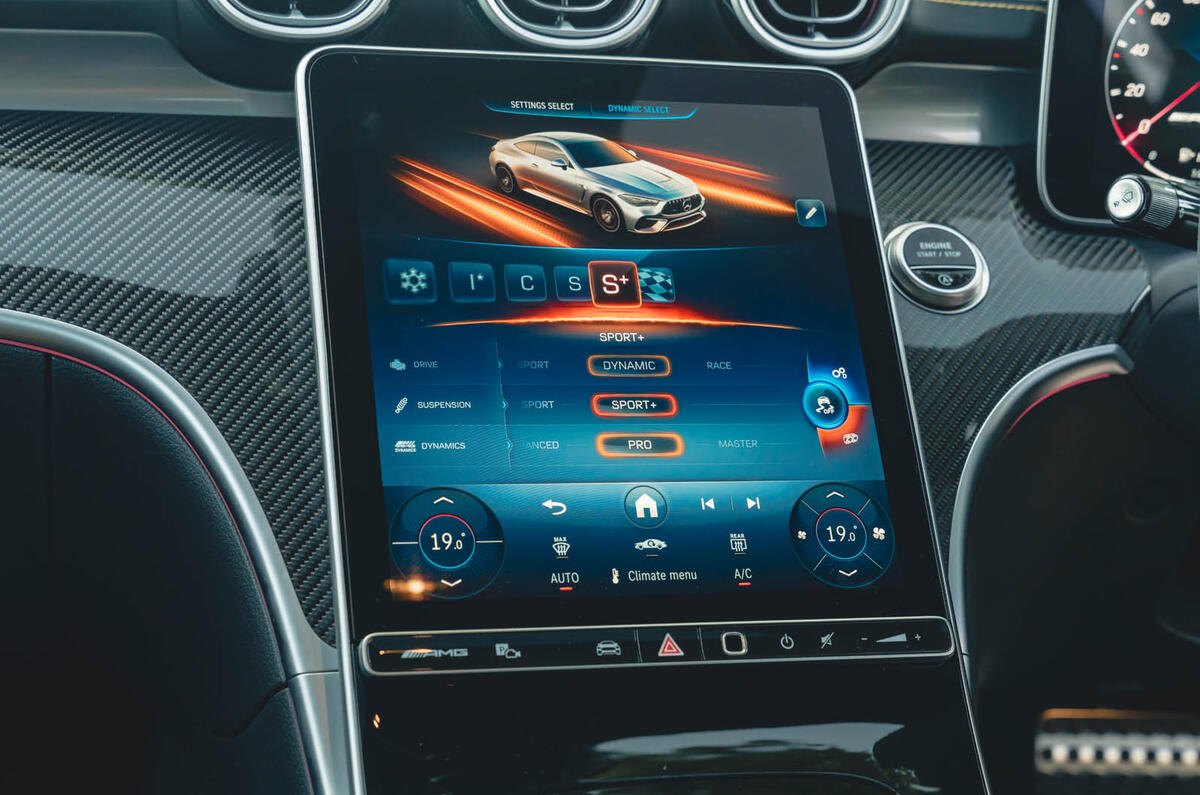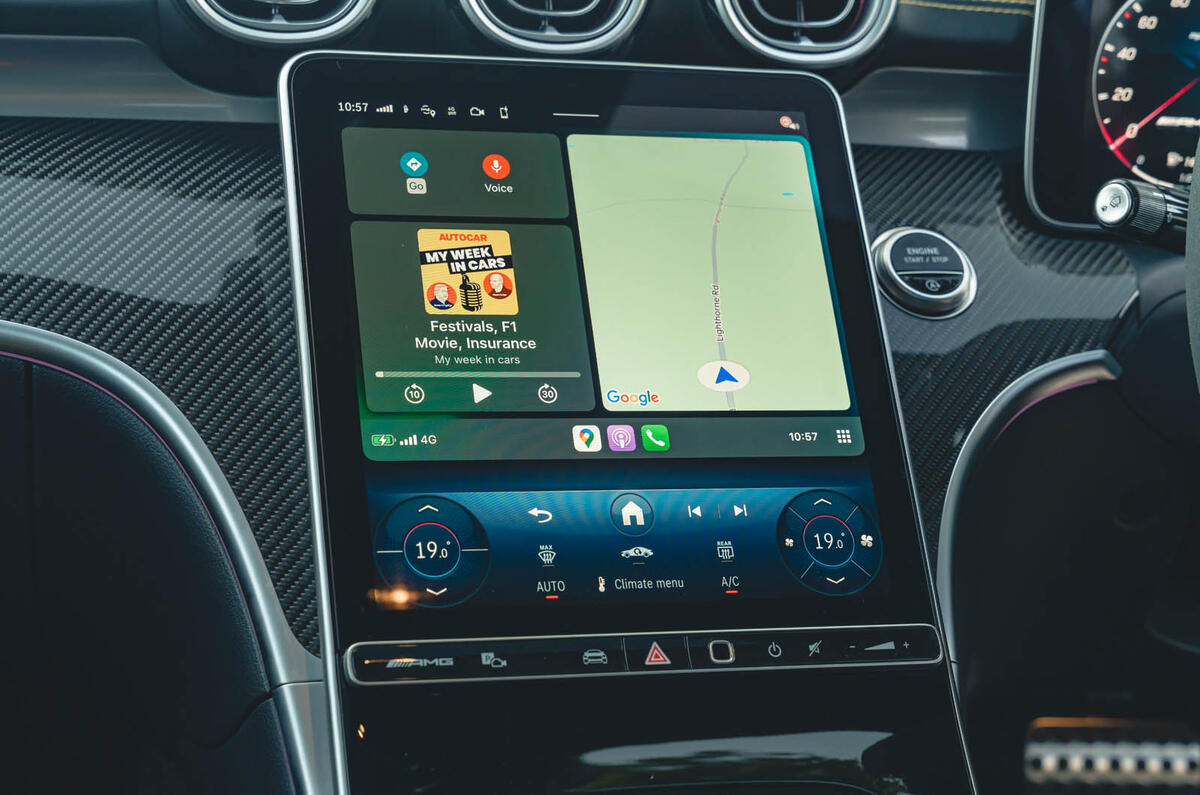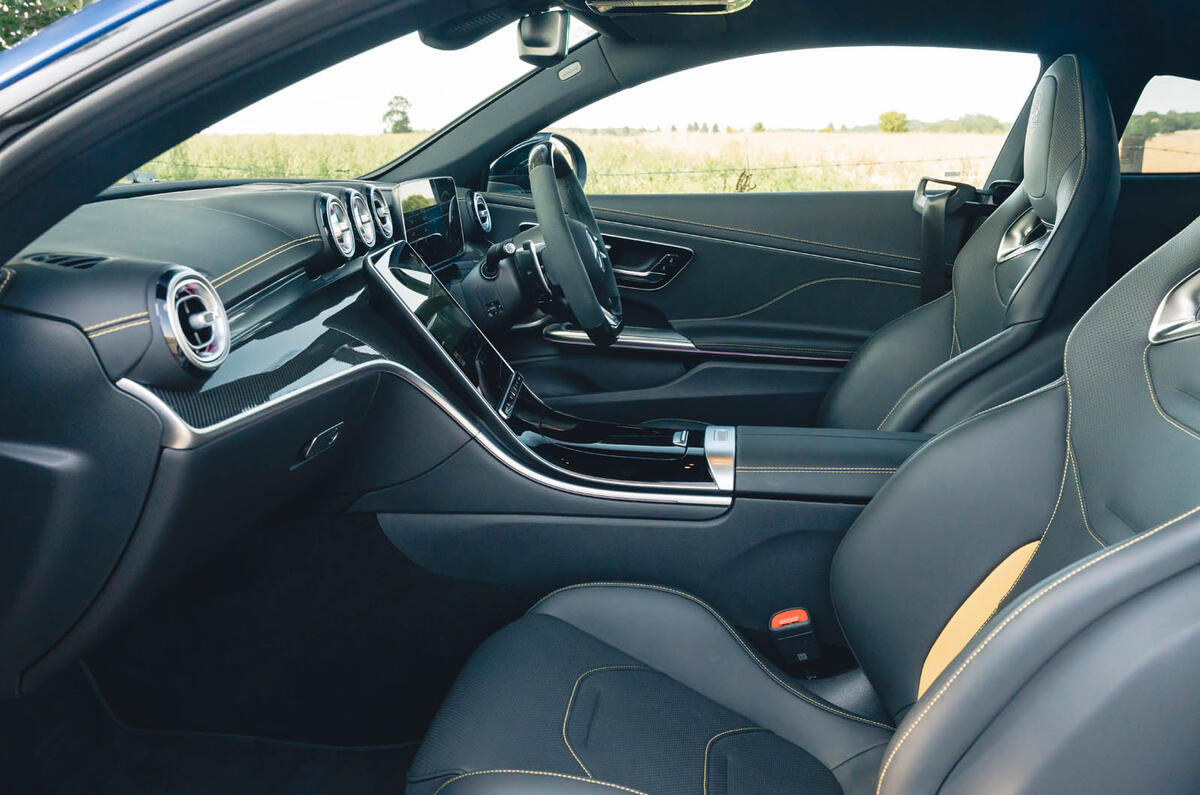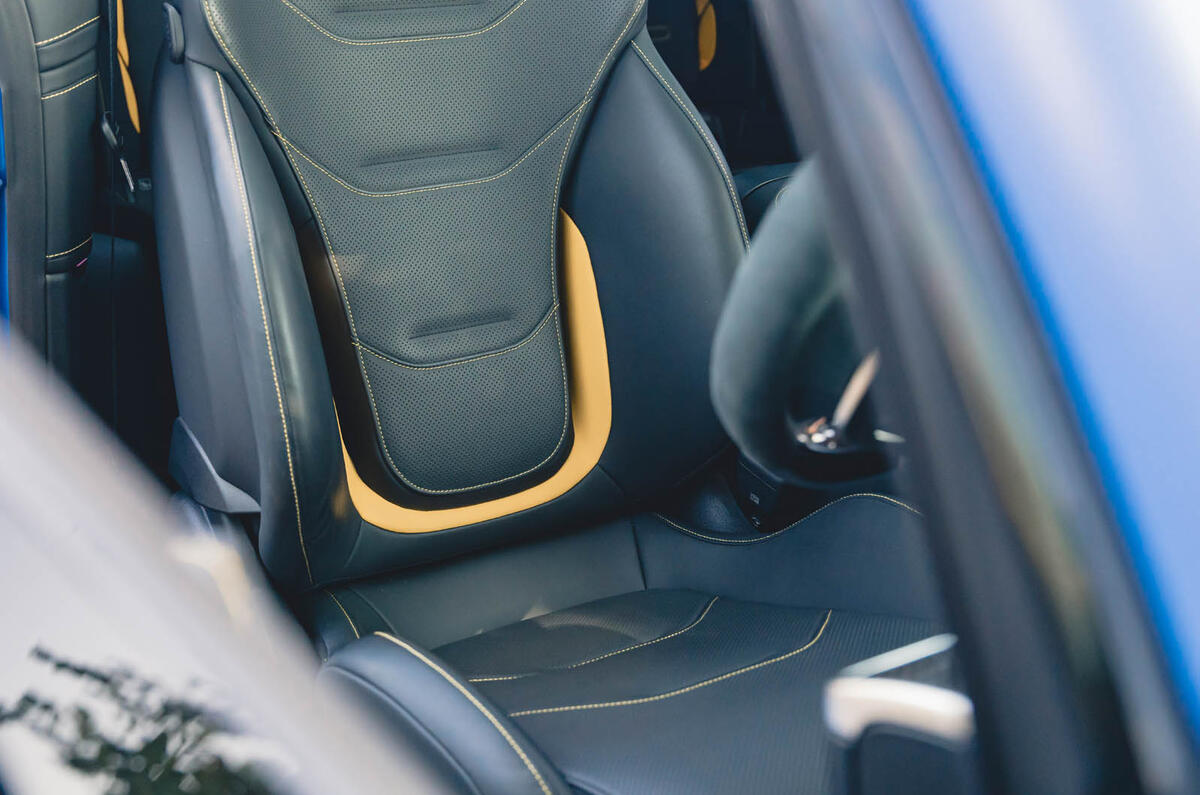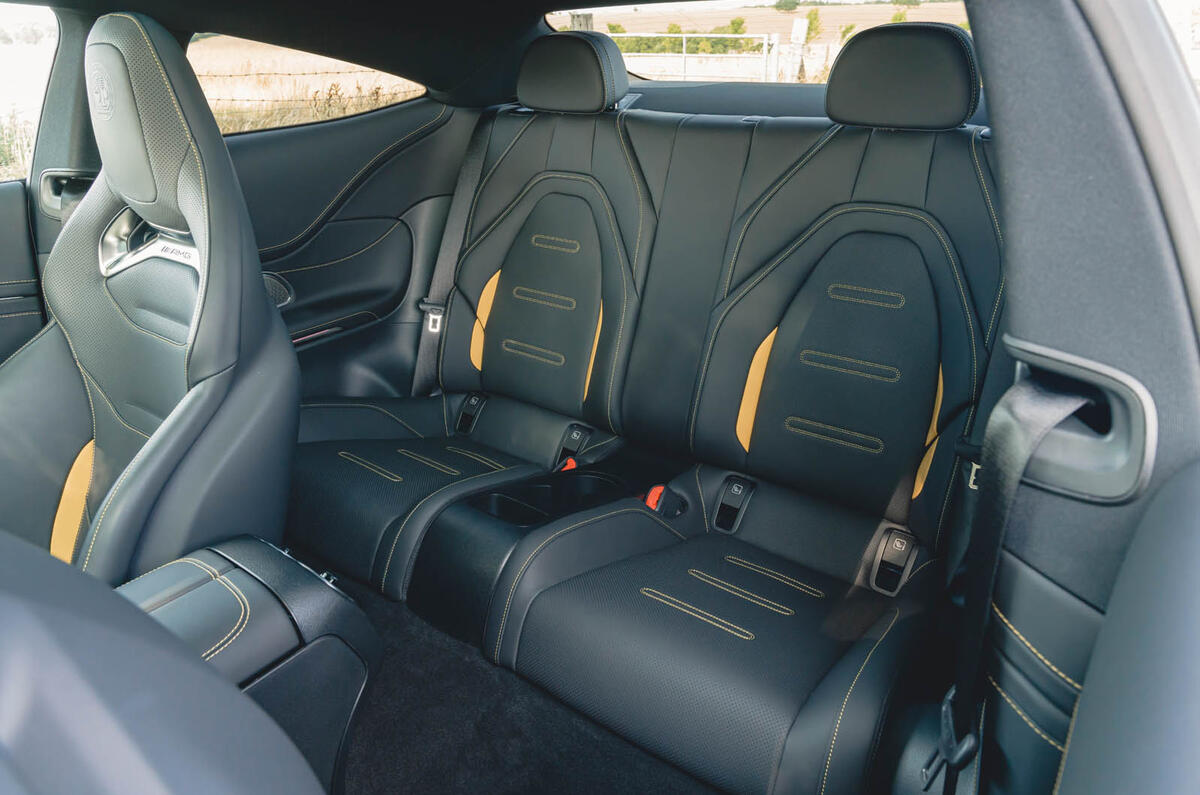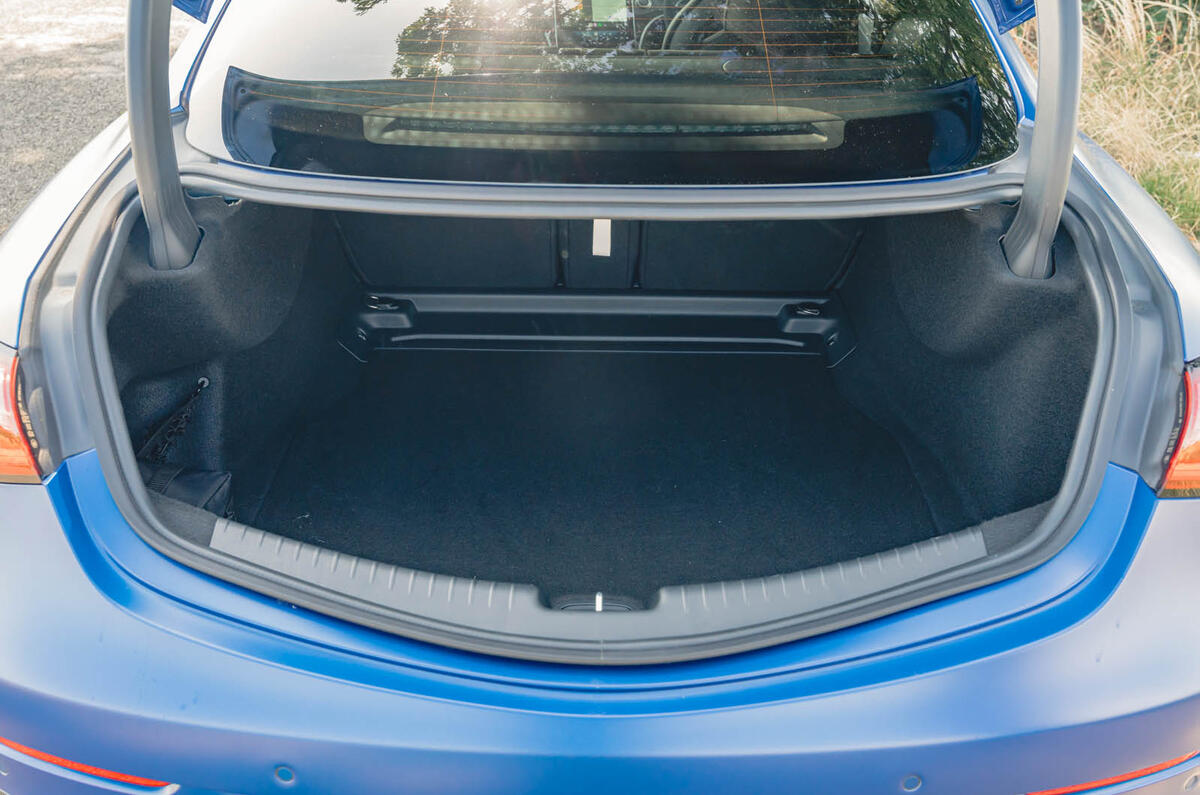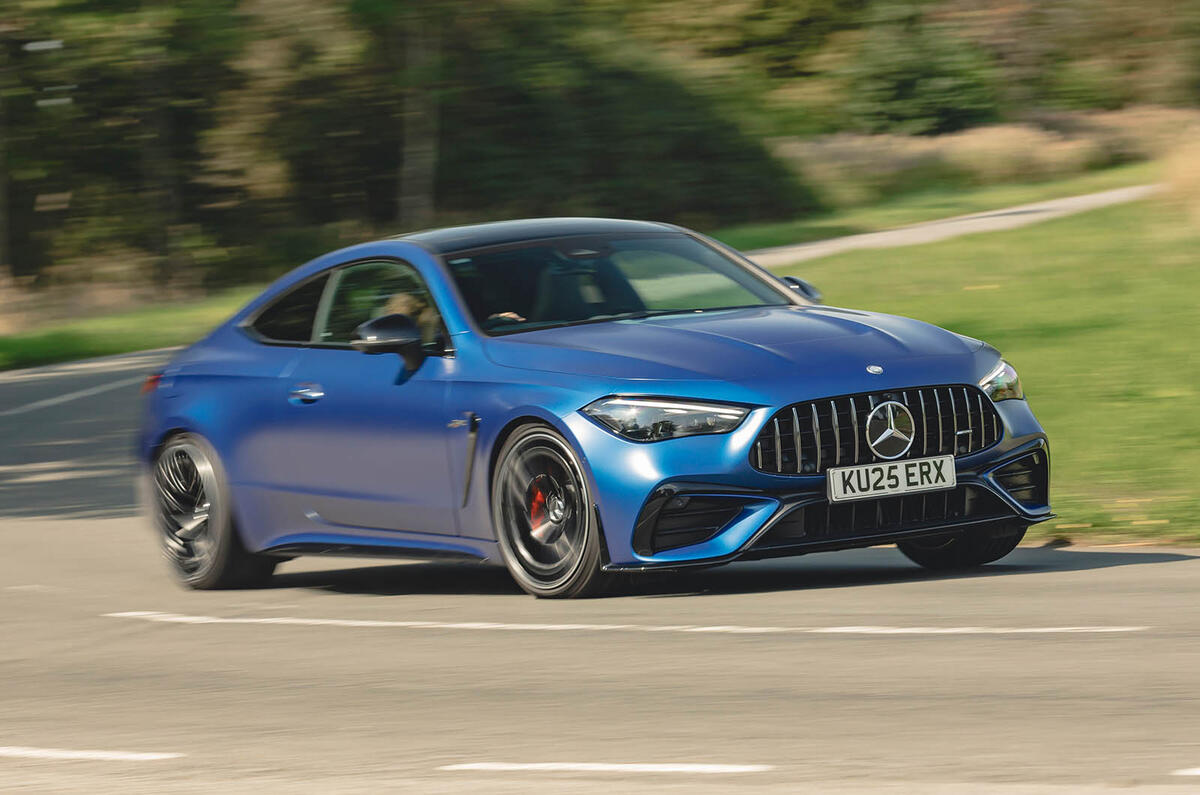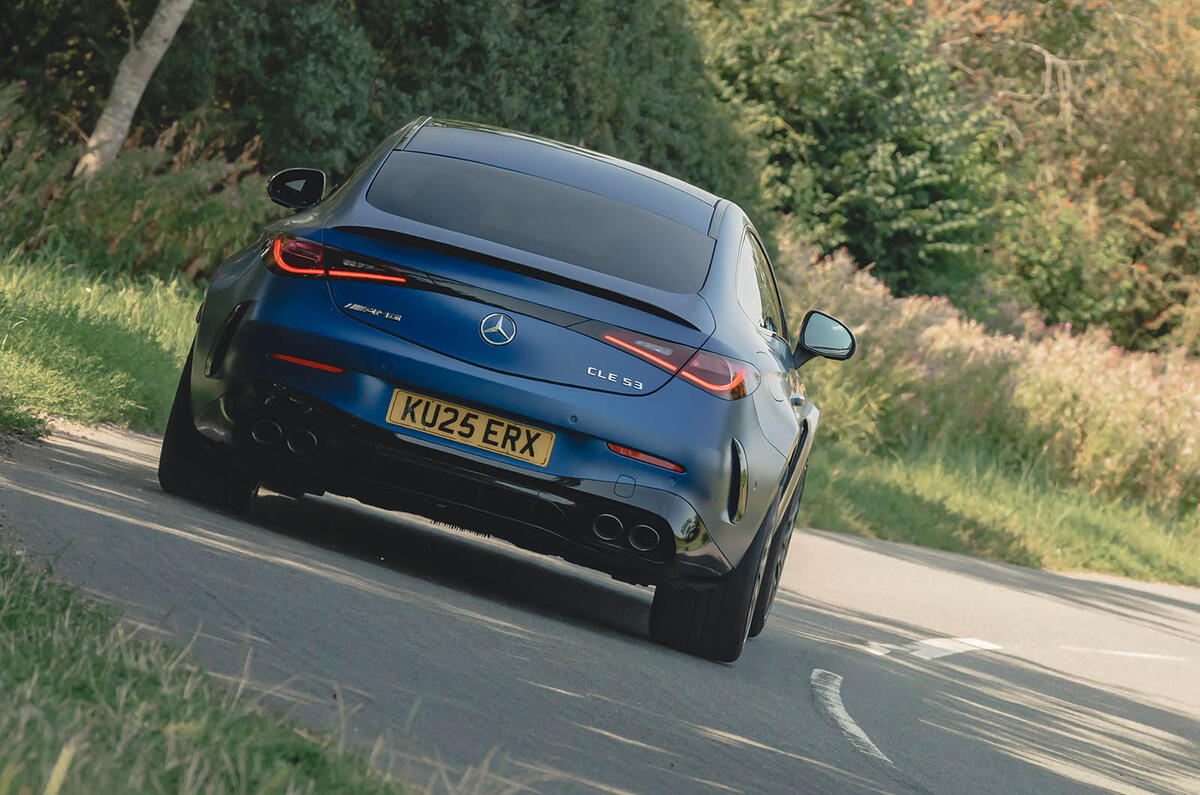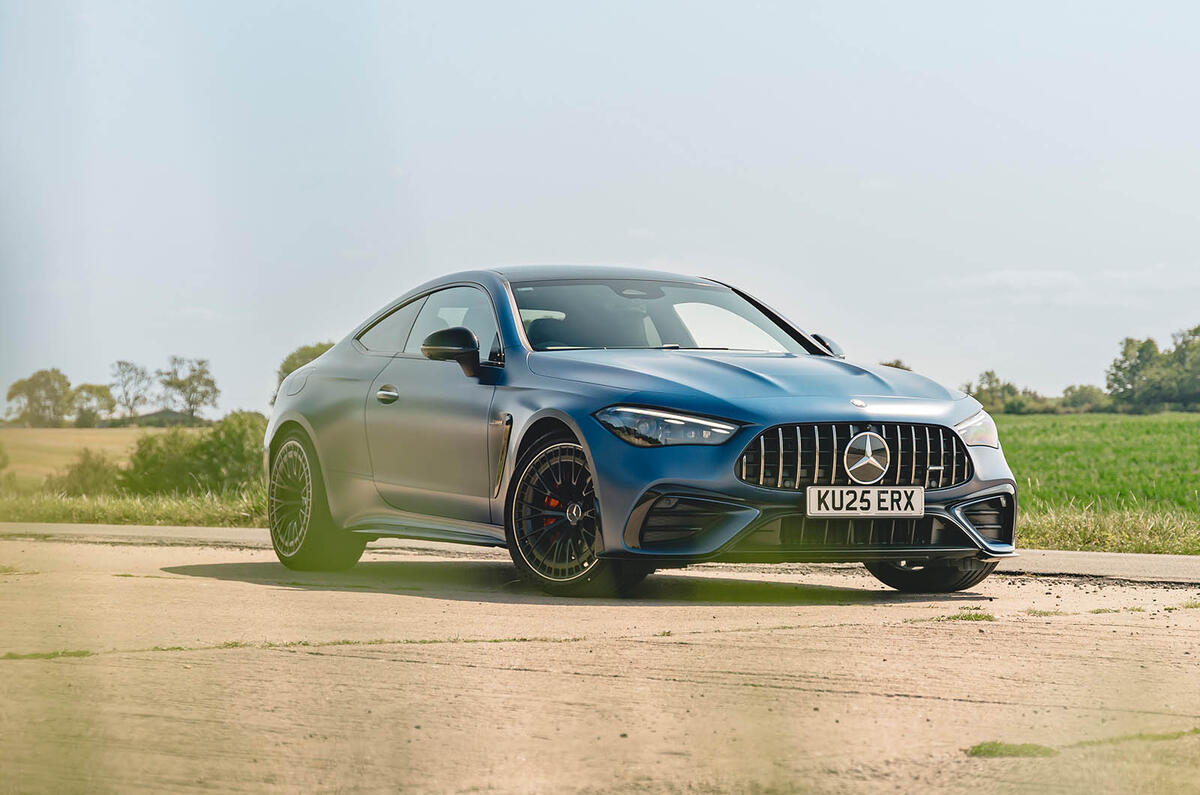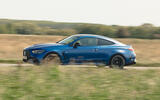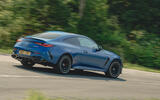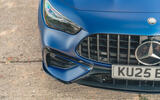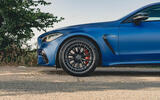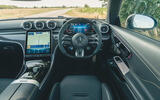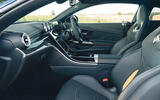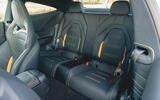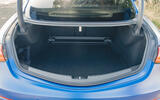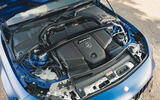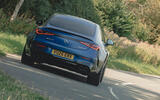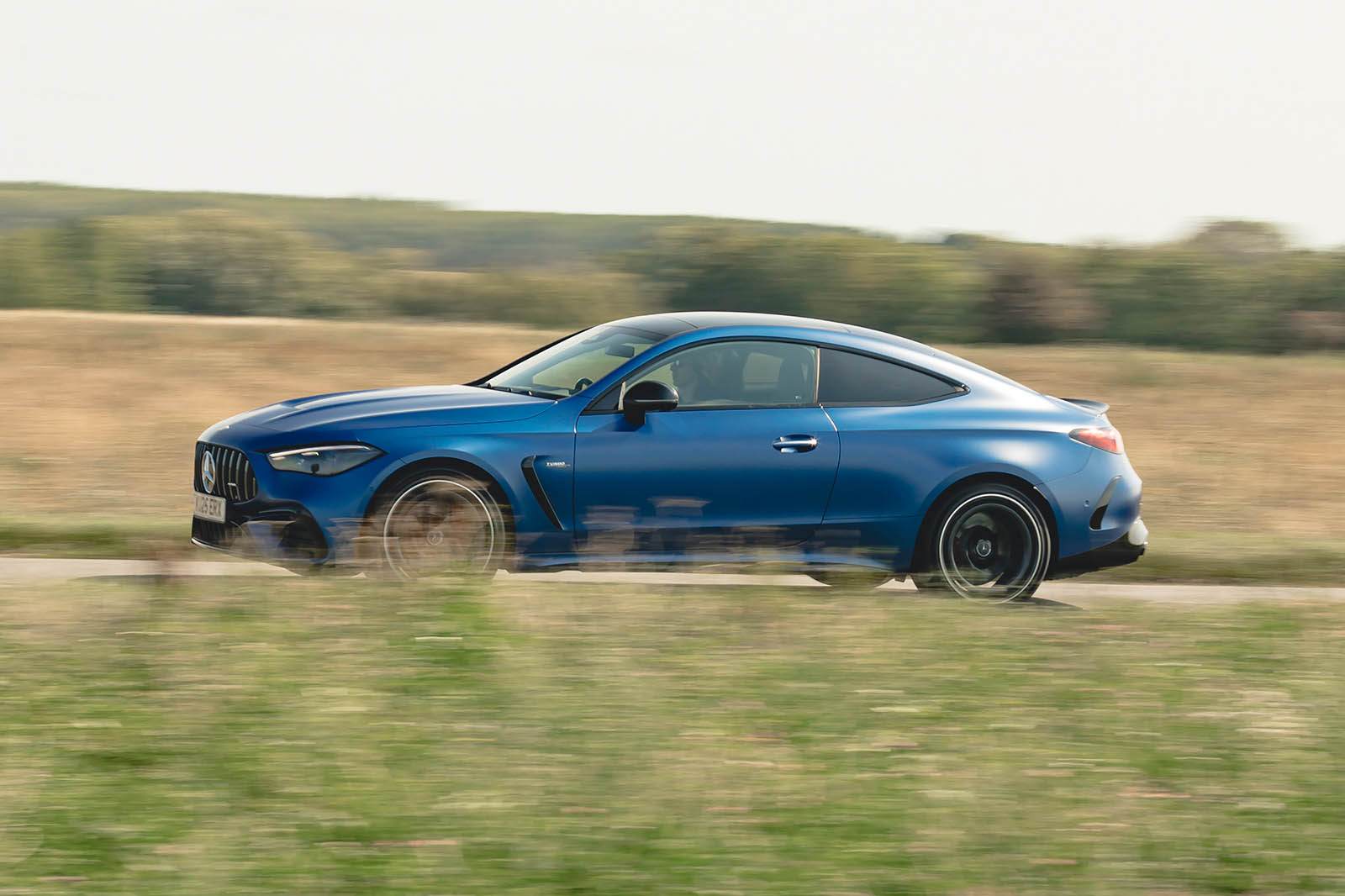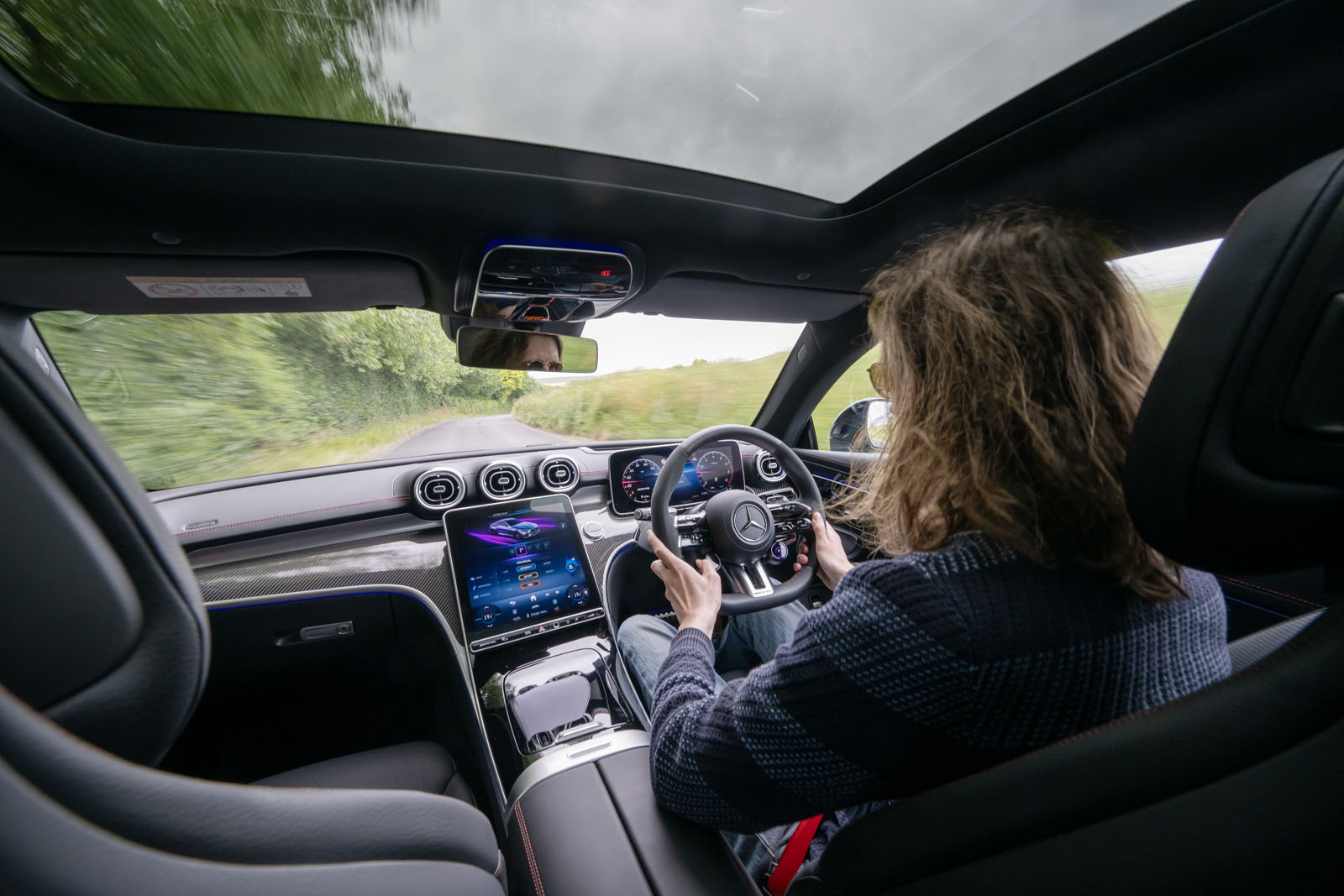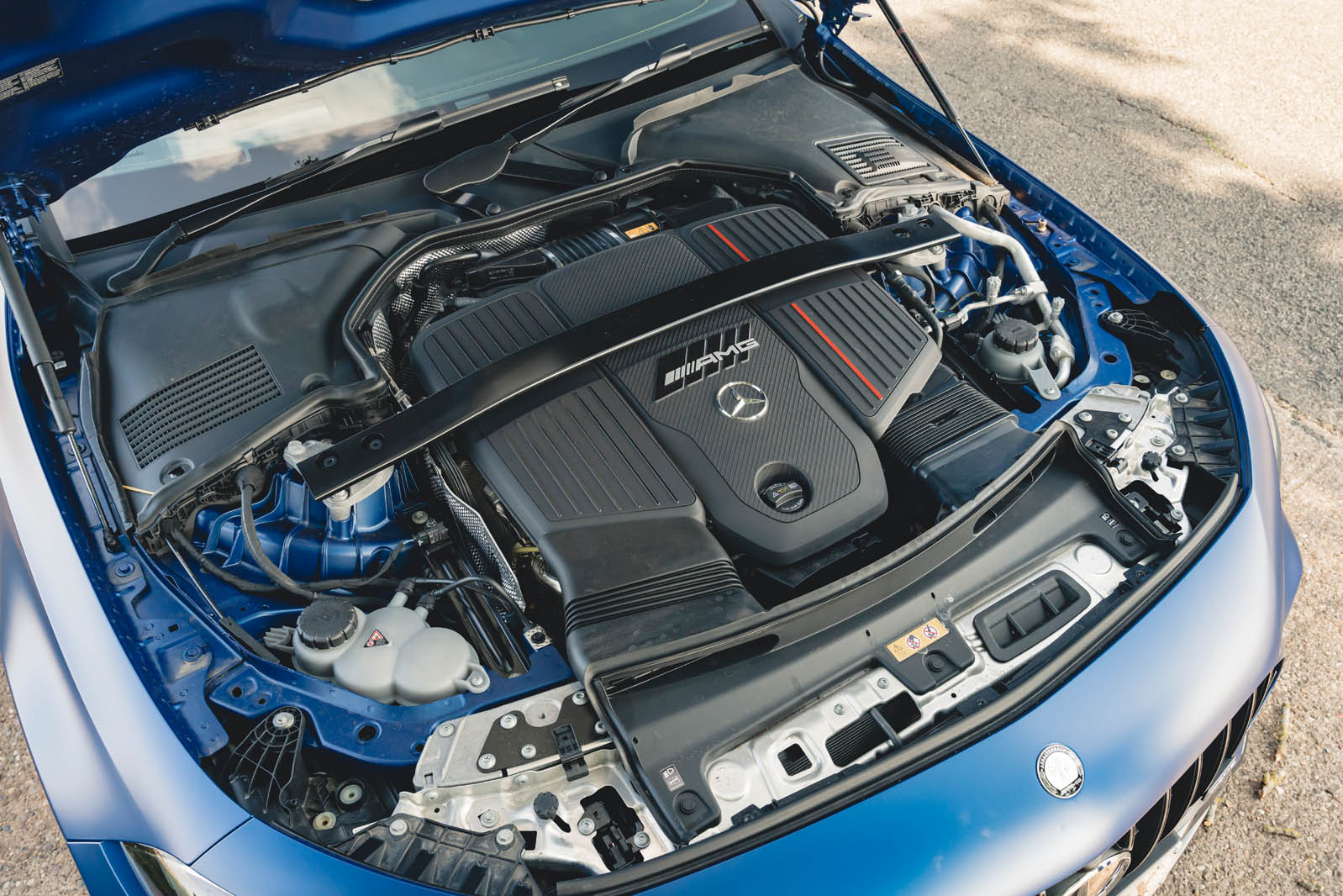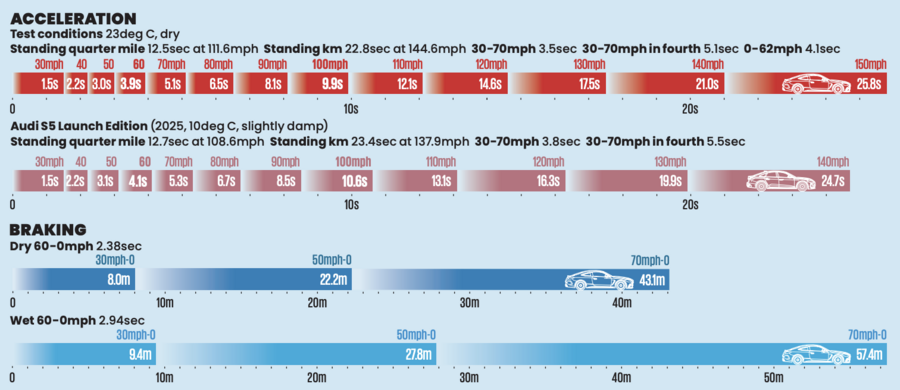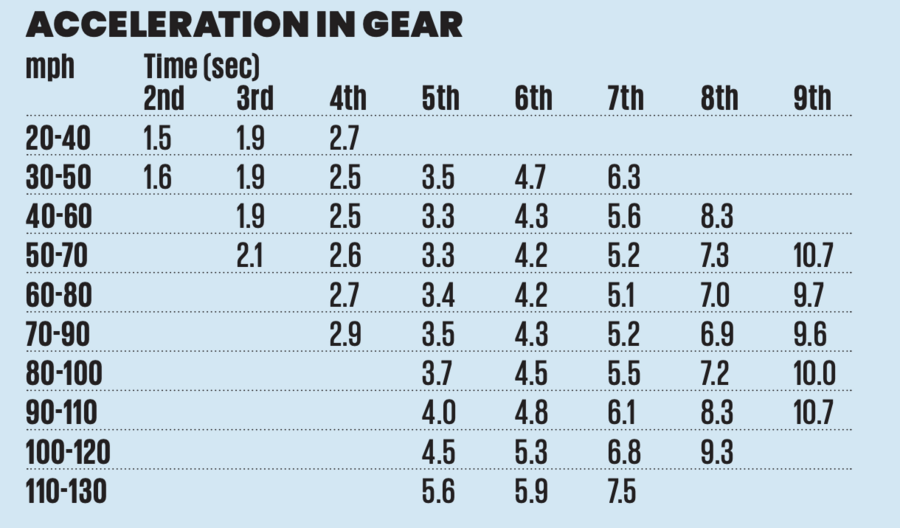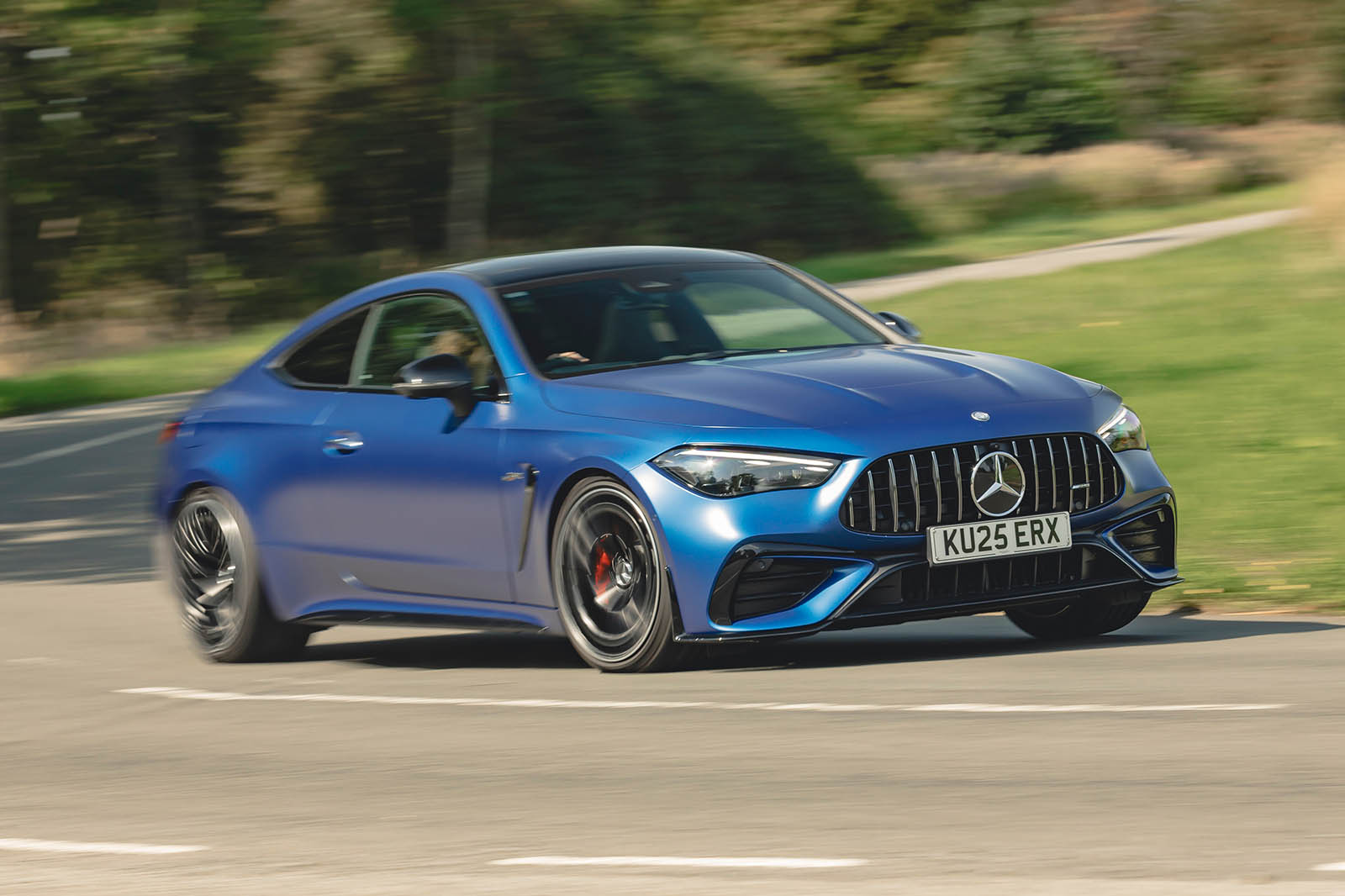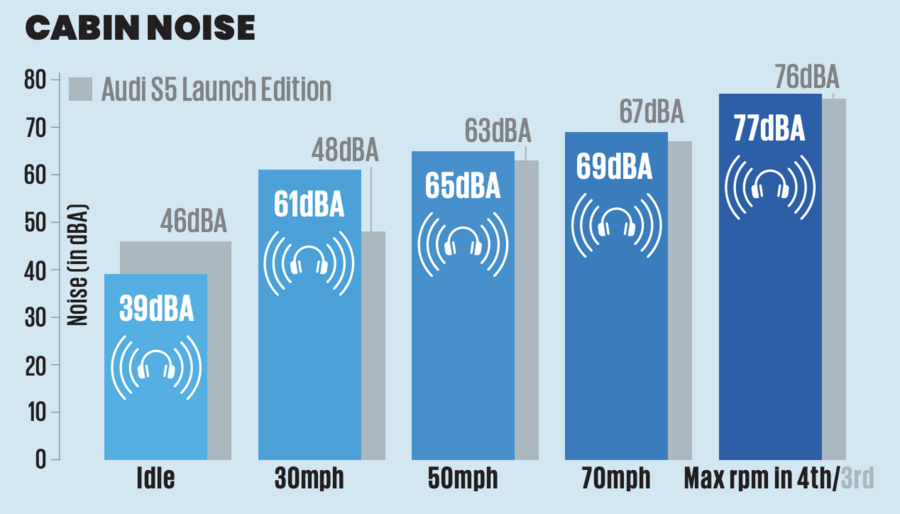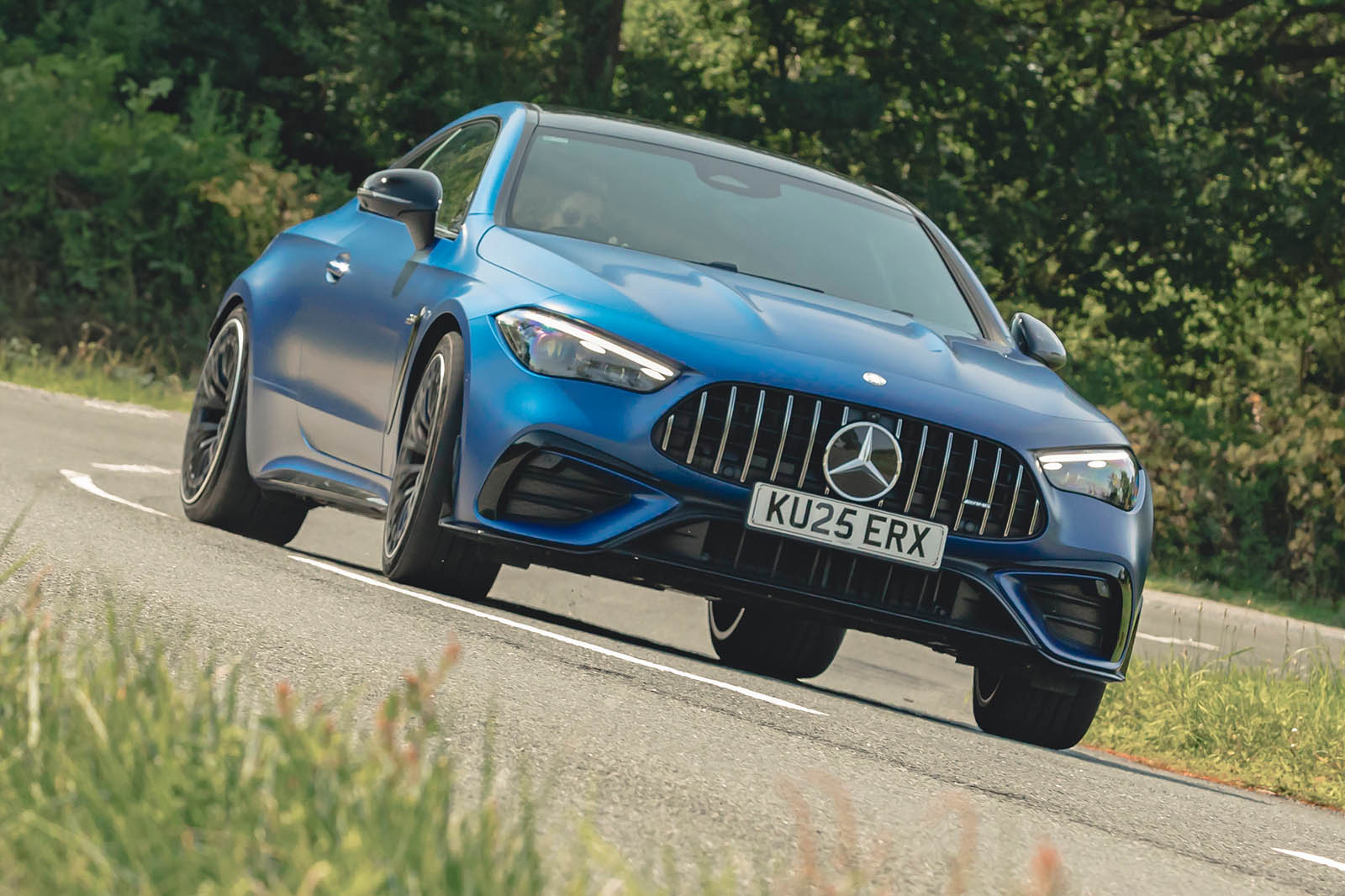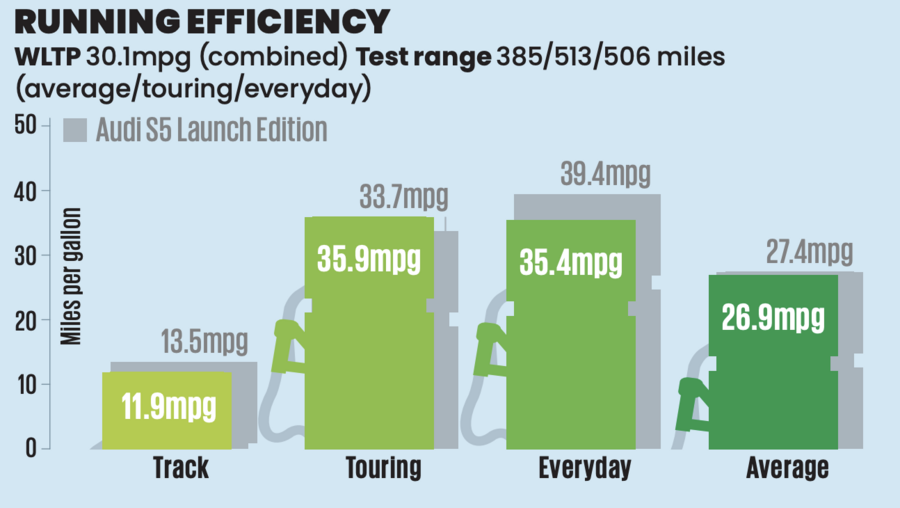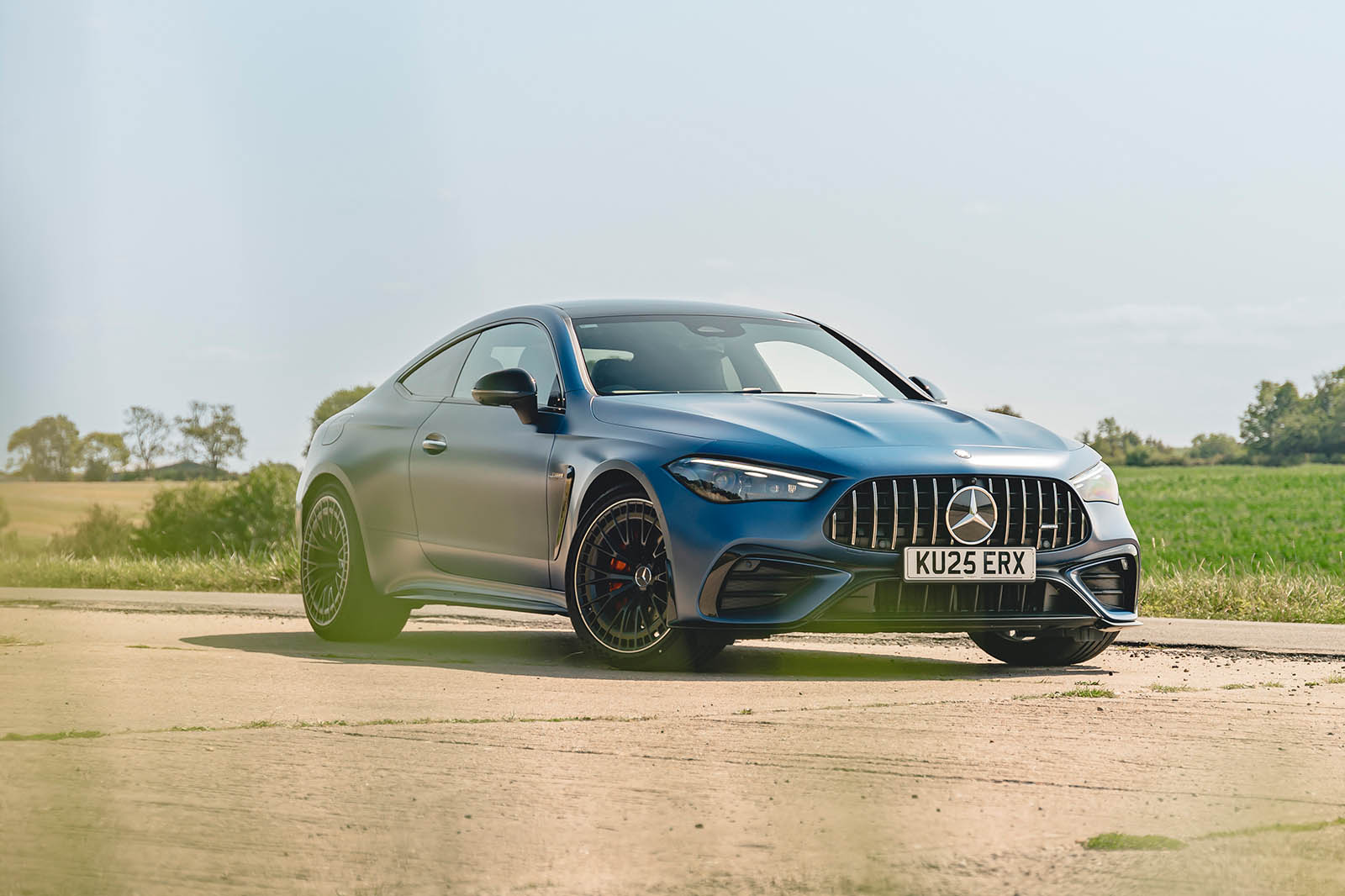As with electrification, the German premium brands have wrestled with the integration of digital tech into their interiors. All have embraced it, but often at the expense of appealing design and usability.
Mercedes has arguably struck the best balance in its C-Class- and E-Class-based cars. There is, of course, a large centre screen but, sitting on the slope of the centre console, it seems better integrated than the more heavy-handed applications in BMWs and Audis. It leaves room for design flourishes elsewhere, like the jet-engine air vents and flowing trim strips, too.
The software itself works very well, despite the heavily curtailed button count. The touchscreen responds instantly and is logical to navigate. The home screen is mainly dedicated to the navigation system (which is very up-to-date and worth using over Google Maps or Waze) but contains permanent controls for the media and the climate control. Mercedes also has among the best voice control systems we’ve found.
Material quality around the cabin remains hit and miss. The leather is soft, the carbonfibre is convincing, and the laser-cut metal speaker grilles for the excellent Burmester sound system could do a decent job on a block of parmesan. All of this contrasts with the loose touchscreen bezel, the scratchy plastic on the lower dash, and the risibly cheap-feeling piece of plastic that makes up the cupholders and centre console for the rear seats, however. We also detected a slight buzz from the driver’s side door card or our test car.
The Pro Performance Package replaces the car’s wood trim with carbonfibre and adds a part-carbonfibre steering wheel, but most importantly replaces the standard seats with ‘AMG Performance seats’, which lower the driving position significantly, addressing one of our complaints with the standard car. These seats are quite firmly padded, but so are the standard ones. They are very widely adjustable, very supportive and comfortable, and a lot easier to get in and out of than BMW’s carbonfibre bucket seats.
There’s just one problem with them. If you make full use of the lower driving position available, you may have difficulty seeing the car’s instruments. With the steering column adjusted down to suit the position of the seat, several testers found that a significant portion of the top of the instrument cluster became obscured by the steering wheel. One would assume both seat options were in the product plan from the start, so the driver display ought to be positioned accordingly. That it evidently hasn’t been shows a lack of attention to the ergonomic basics unbefitting of a premium brand.
Although you wouldn’t pick a two-door coupé if practicality was a priority, the CLE does reasonably well in that respect, so long as you avoid the plug-in hybrid CLE 300e. Shorter adults and children can just about sit in the cosy back seats, which can be folded down to expand an already generous boot that is equipped with various hooks and some underfloor space.
Design-wise, the car offers a choice of two aesthetics. Night Edition cars have the usual lashings of carbonfibre and an Alcantara steering wheel, while the standard Premium version has a classier and more subdued aesthetic with more leather and wood trim.
The CLE 53 Cabriolet offers the same luxurious driving environment peppered with sporting touches. Its new multi-layer fabric roof opens in just 20 seconds at road speeds of up to 37mph and operates silently, thanks to a new electric mechanism. With the roof down, there’s 285 litres of boot space, increasing to 375 litres when it’s closed, with the option to extend luggage capacity via a 60/40-split folding rear seat.
Either way, with the roof in place the cabin is snug and warm, the multi-layered fabric hood offering almost coupe-like refinement on the move. Drop the top and the effective wind deflectors and Airscarf system, which blows warm air on the necks of front seat occupants, make the CLE’s cabin a cosy and bluster-free environment.
